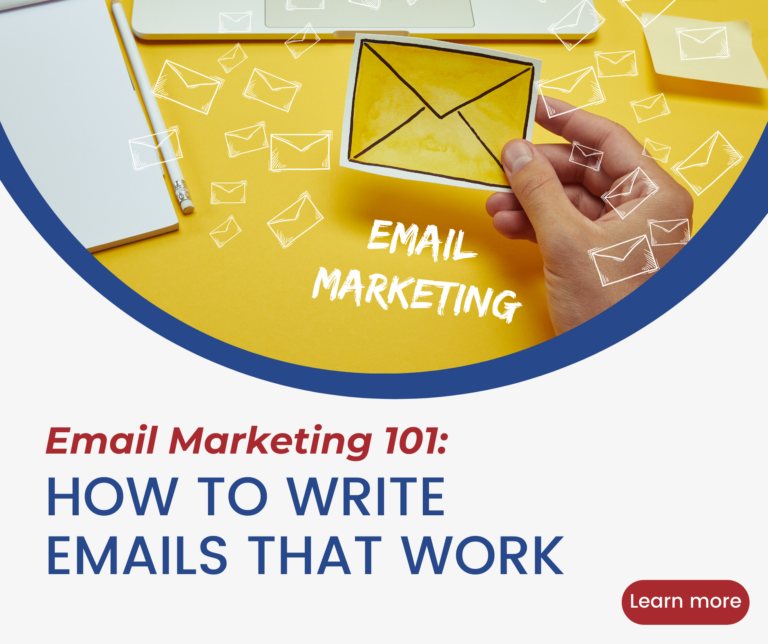Email is a powerful tool. But with so much competition in every inbox, it can be tough to get potential customers to pay attention to YOUR email!
Here’s a step-by-step guide to creating marketing emails that’ll help you get those clicks and conversions you need to accomplish your goals.

Step 1: Figure Out Who You’re Talking To
The first rule of marketing is to know your customer. Hopefully, you’ve already done some work on buyer personas. These fictional representations of your ideal clients can help you dive deep into customer motivations and pain points and see how your products or services can really help. Segmenting your email list based on your buyer personas allows you to provide content that addresses those specifics.
Step 2: Pay Attention to the Customer Journey
You should also segment by stage in the customer journey. Someone who’s just had their first contact with your company will need different content than a repeat customer. This is true even if they’re part of the same persona! While some emails can go to your entire list—a notice about a huge 24-hour sale, for example—most emails should be written for a specific segment of your list.
Step 3: Choose a Catchy Subject Line
Try to keep your subject line short so it doesn’t get cut off in email apps. You might use recipients’ names to catch their attention, let them know about a coupon or sale inside, mention an item that they showed interest in, or ask a question!
Go through your own inbox and get inspiration from the emails that you decided to open. What was it that made you want to click?
Step 4: Craft Personalized Content
Speak directly to your specific audience segment using clear and relatable language. Follow your brand style guide for consistency. Your customers should feel that you’re aware of their needs and knowledgeable about a solution. They should know you care about your customers, not just a sale!
You might offer value through free downloads, coupons, or just some genuinely helpful information. You can build trust by sharing reviews, testimonials, or company awards.
Step 5: End with a Clear CTA
Engagement should be the goal of every email! It’s important to include a call-to-action (CTA) in your email, whether you want the recipients to download a free guide, shop a sale, or listen to a podcast. A good CTA is an active and direct invitation like “Start Saving Now,” “Connect with Us,” or “Learn More Now.”
Step 6: Provide a Way to Keep in Touch
If you send emails from a no-reply email address, customers may not know how to contact you. It can also impact email deliverability. Send your emails from a valid email address that’s regularly monitored so that customers can connect with your team quickly. You can also include social media contact information, if that’s a method you use to interact with customers.
Step 7: Test Your Emails
After you’ve built some emails you feel good about, you can use A/B testing to experiment with small changes in your subject lines, content, CTAs, or images. This will help you figure out what really works best with your audience.
Get Started Today!
We hope this list helps you create marketing emails that inform and inspire your target audience.
If you’d like support in this process, 2XM is here to help! We’ll guide you through email marketing best practices to help you reach your customers and not the spam folder. Contact us for a FREE 60 minute consultation today.
